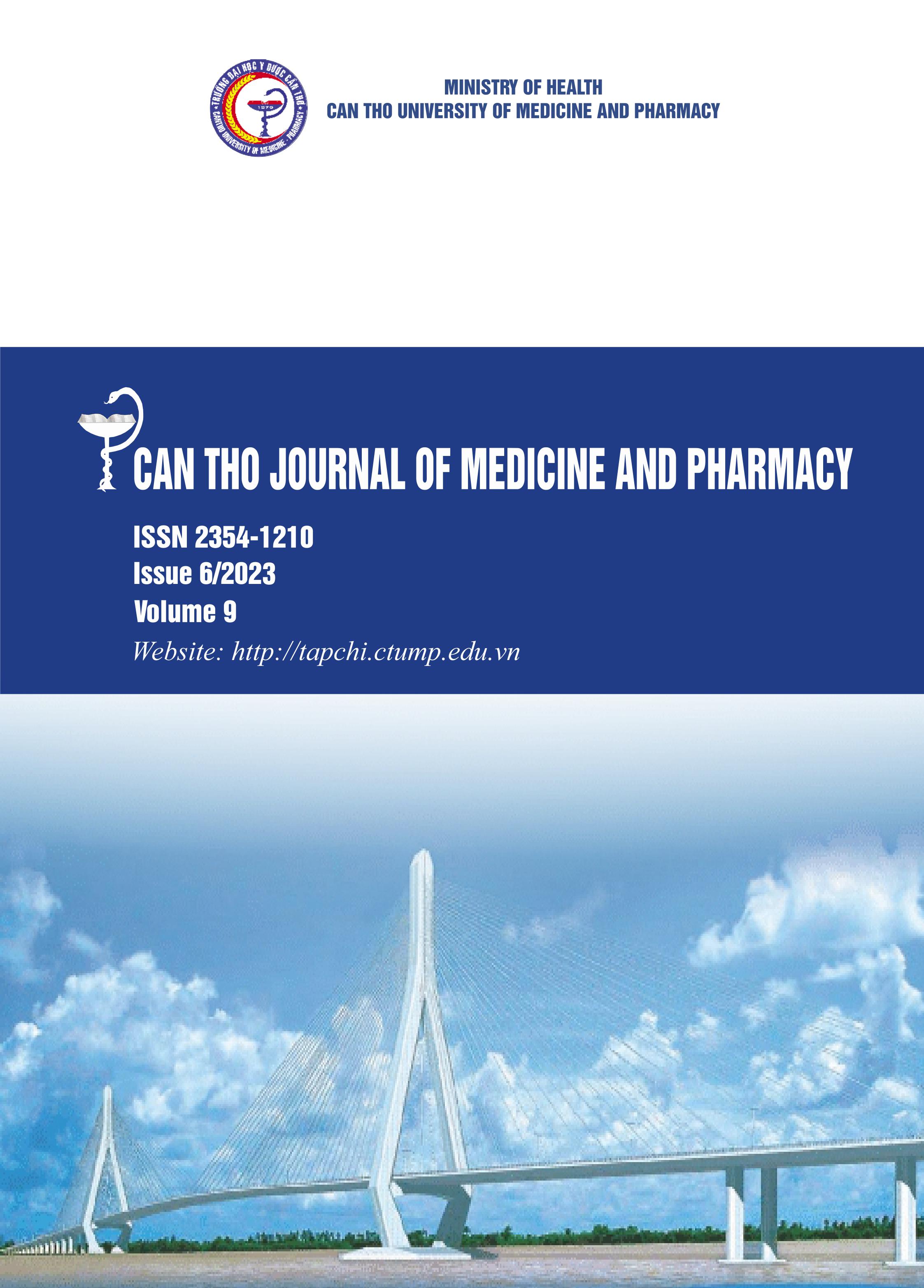A REVIEW OF PARACETAMOL: MECHANISM OF ACTION AND THE EFFECTS ON SPERMATOGENESIS
Nội dung chính của bài viết
Tóm tắt
Nowadays, there are many factors causing the decrease of male reproductive function such as diet, routine, chemical, ... But some of them have not been paid appropriate attention to, especially the use of paracetamol, which has a significant negative effect on the reproductive process. In this study, we will summarize the results of several studies on the harmful effects of prolonged high-dose use of paracetamol on sperm number, quality, portability and testicular morphology in experimental animals and humans. The association between the long-term usage of paracetamol in chronic human diseases and their toxicity is highly concerned, especially the reproductive function. Their toxicity has increased more in adult male subjects, along with the introduction of studies on the use of high and long-term doses of paracetamol affecting reproductive quality. This review discusses the link between long-term usage of high doses of paracetamol and fertility as well as the effects of sex hormones in experimental animals and humans nowadays. As a result, paracetamol affects the reproductive system, impairing spermatogenesis and sperm quality. The amount of reproductive function damage, the dosage and duration of paracetamol usage are closely correlated. When groups of participants take paracetamol, numerous investigations in both experimental animals and humans have shown a decrease in sperm count and sperm motility as well as abnormalities in sperm morphology and testicular histology. Physicians have to exercise caution while treating patients with paracetamol and other related medications, especially men. Therefore, more studies should be done to determine the relationship between dosage, response, and treatment duration. When treating patients with decreased sexual function, medications that can prevent paracetamol toxicity should be used in conjunction with other medications. Especially, traditional medicine continues to play a significant part in the research and development of many new medicines despite the rapid advancement of contemporary medicine.
Chi tiết bài viết
Từ khóa
paracetamol, spermatogenesis, testosterone, testis, infertility
Tài liệu tham khảo
2. Freo U., Ruocco C., Valerio A., ScHàoagnol I., and Nisoli E. Paracetamol: A Review of Guideline Recommendations. Journal of Clinical Medicine. 2021.10(15), 3420. https://doi.org/10.3390/jcm10153420.
3. Banihani S.A. Effect of paracetamol on semen quality. Andrologia. 2018.50(1). https://doi.org/10.1111/and.12874.
4. Saragiotto B.T., Shaheed A.C., Maher C.G. Paracetamol for pain in adults. The BMJ. 2019. 367, l6693. https://doi.org/10.1136/bmj.l6693.
5. McCrae J.C., Morrison E.E., MacIntyre I.M., Dear J.W., and Webb D.J. Long-term adverse effects of paracetamol - a review. British Journal of Clinical Pharmacology. 2018.84(10), 22182230. https://doi.org/10.1111/bcp.13656.
6. Chiew A.L., Fountain J.S., Graudins A., Isbister G.K. and Reith D., et al. Summary statement: New guidelines for the management of paracetamol poisoning in Australia and New Zealand. The medical journal of Australia. 2015.203, 215-218. https://doi.org/10.5694/ mja15.00614.
7. Samplaski M.K., and Nangia A.K. Adverse effects of common medications on male fertility. Nature Review Urology. 2015.12, 401-413. https://doi.org/10.1038/nrurol.2015.145.
8. Practice Committee of American Society for Reproductive Medicine. Definitions of infertility and recurrent pregnancy loss: a committee opinion. Fertility and Sterility. 2013.99(1), 63. https://doi.org/10.1016/j.fertnstert.2012.09.023.
9. Centers for Disease Control and Prevention. Infertility. 2022. https://www.cdc.gov/ nchs/fastats/infertility.htm.
10. Chandra A., Copen C.E., and Stephen E.H. Infertility and impaired fecundity in the United States, 1982-2010: data from the National Survey of Family Growth. Natl Health Stat Report. 2013.67, 1-19.
11. Centers for Disease Control and Prevention. Infertility. What causes infertility in men?. 2023. https://www.cdc.gov/reproductivehealth/infertility/index.htm.
12. Khayyat. L.I. Extra Virgin Olive Oil Protects the Testis and Blood from the Toxicity of Paracetamol (Overdose) in Adult Male Rats. Biology (Basel). 2021.10(10), 1042. https://doi.org/10.3390/biology10101042.
13. Perlovich G.L., Volkova T.V., Manin A., and Bauer-Brandl A. Influence of Position and Size of
Substituents on the Mechanism of Partitioning: A Thermodynamic Study on Acetaminophens, Hydroxybenzoic Acids, and Parabens. AAPS PharmSciTech. 2008.9(1), 205-216. https://doi.org/10.1208/s12249-008-9033-0.
14. Sargent K.M., McFee R.M., Gomes R.S., and Cupp A.S. Vascular endothelial growth factor A: just one of multiple mechanisms for sex-specific vascular development within the testis?. Journal of Endocrinology. 2015.227(2), 31-50. https://doi.org/10.1530/JOE-15-0342.
15. Hinz B., and Brune K. Paracetamol and cyclooxygenase inhibition: Is there a cause for concern?. Annals of the Rheumatic Diseases. 2013.71(1), 20-25. https://doi.org/10.1136/ ard.2011.200087.
16. Kristensen D.M., Skalkam M.L., Audouze K., Lesné L., and Desdoits-Lethimonier C., et al. Many putative endocrine disruptors inhibit prostaglandin synthesis. Environ Health Perspect, 2011.119(4), 534-41. https://doi.org/10.1289/ehp.1002635.
17. Albert O., Desdoits-Lethimonier C., Lesne L., Legrand A., and Guille F., et al. Paracetamol, aspirin and indomethacin display endocrine disrupting properties in the adult human testis in vitro. Hum Reproduction. 2013.28(7), 1890- 1898. https://doi.org/10.1093/humrep/det112.
18. Kristensen D.M., Lesné L., Le Fol V., Desdoits- Lethimonier C., and Dejucq-Rainsford N., et al. Paracetamol (acetaminophen), aspirin (acetylsalicylic acid) and indomethacin are anti-androgenic in the rat foetal testis. International Journal of Andrology. 2012.35(3), 377-384. https://doi.org/10.1111/j.1365-2605.2012.01282.x.
19. Holm J.B., Chalmey C., Modick H., Jensen L.S., and Dierkes G. Aniline Is Rapidly Converted Into Paracetamol Impairing Male Reproductive Development. Toxicological Science. 2015.148(1), 288-298. https://doi.org/10.1093/toxsci/kfv179.
20. Mona. Hormonal Regulation of Male Reproductive System (Human). 2020. https://biologicalhelp.blogspot.com/2020/04/hormonal-regulation-of-male.html.
21. Kotula-Balak M., Hejmej A., and Bilińska B. Hydroxysteroid Dehydrogenases - Localization, Function and Regulation in the Testis. 2011.3342. https://doi.org/ 10.5772/47740.
22. Driesche S. V. D., Macdonald J., Anderson R. A., and Johnston Z. C., et al. Prolonged exposure to acetaminophen reduces testosterone production by the human fetal testis in a xenograft model.
Science translational medicine.2015.7(288), 288. https://doi.org/10.1126/ scitranslmed.aaa4097.
23. Blecharz-Klin K., Wawer A., Pyrzanowska J., Piechal A., and Jawna-Zboińska K., et al. Hypothalamus - Response to early paracetamol exposure in male rats offspring. International
Journal of Developmental Neuroscience. 2019.76, 1-5. https://doi.org/10.1016/ j.ijdevneu.2019.05.004.
24. Cohen I.V., Cirulli E.T., Mitchell M.W., Jonsson T.J., and Yu J., et al. Acetaminophen (Paracetamol) Use Modifies the Sulfation of Sex Hormones. EbioMedicine.2018.28, 316-323. https://doi.org/10.1016/j.ebiom.2018.01.033.


